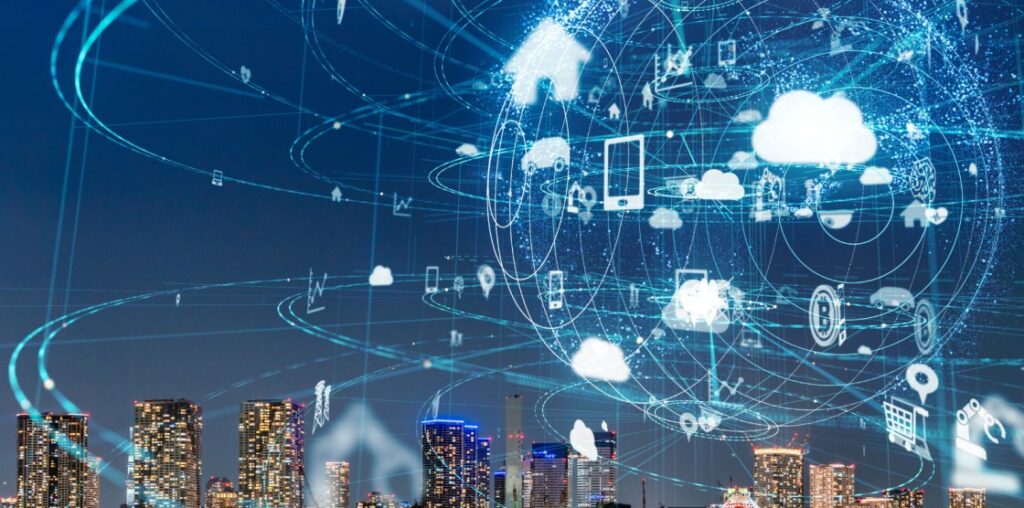In the modern connected world, network management particularly of device has become a fundamental aspect of current technology. Whether it involves small devices that monitor the usage of resources in a smart house or huge industrial systems, the demand for effectiveness of the oversight process is much higher. This is where remote device management software comes into play So now let me introduce remote device management software. It enables the business to manage, supervise and maintain the devices effectively using centralized stations. The remote device management software working in conjunction with an IoT platform is instrumental in changing the organisations ways of handling their device management.
A brief about Remote Device Management Software
Remote device management is a solution that is mean to manage dispensing and operate devices located at different places where physical contact with the machines is not possible. This also makes sure that all the devices connected in the network run optimally, are safe from threats and can update whenever. This kind of software is particularly useful in cases where the devices are located both far from each other or where monitoring cannot carry out manually.
They include smart refrigerators, automated cars or industrial IoT systems and smart Home appliances among others – it links the hardware to the device management platform for real time monitoring, diagnosing and updating.
What Does Remote Device Management Software?
The software works by consolidating smart devices at the center of a smart IoT system. It is a common ground whereby devices send data and where the administrators in turn address these devices.
Here’s how it works:
Device Connectivity
A device can connect to the platform with a wireless technology including; Wireless Fidelity (Wi-Fi), Bluetooth, cellular, or with the application of technologies like message queue telemetry transport (MQTT) or hypertext transfer protocol (HTTP). This allows easy interaction with the stakeholders.
Data Collection
After connecting the devices send or constantly update the status, performance, or any changes observed to the central platform.
Real-Time Monitoring
For example, the administrators can monitor the health of the devices installed, their performance and operational efficiency in realtime, all from one location.
Remote Updates and Maintenance
Need for applications or setting security scanner or updates, patches or configurations change can made centrally across all connected devices.
Automation and Alerts
Adaptive processes enable critical problems to be detect ahead of time, thereby minimising interruption and expenses.
Remote device management software key factors
To understand the importance of remote device management, consider its key features:
A single place for managing all the devices in healthcare facilities.
This means the central management of all associated appliances because it simplifies expanding the chain operation.
Security and Compliance
Security of data and devices has to be certain. Global management software for remote devices provides protection against unauthorized access, as well as compliance with regulations and encryption.
Scalability
The software is compatible with thousands of devices, so it has many applications in the IoT space across healthcare, manufacturing and smart city settings.
Analytics and Reporting
Analytics obtained from the devices provide improved decision making, prognosis and utilization of resources.
Remote Troubleshooting
This means that administrators can fix a device’s problems without having to physically go to the device, reducing work trips.
Advantages of Remote Device Management Software
Efficiency
Reduction in management time is achieved through marshaling of devices whereby most of the procedures are handled through automated means as well as having prompt solutions to problems.
Cost Savings
Hence, if the amount of physical interferences is decrease and the amount of downtime is minimize, the operating expenses are greatly decreased as well.
Improved Security
With such products in place, devices are safe from the latest threats through constant check and update.
Enhanced Scalability
Organizations can integrate more devices into their environment without the need for rebuilding what was already put into place.
Better Insights
Real-time data analytics help organizations make accurate decisions, drive efficiency and deliver superior users’ experience.
Use of remote device Management Software
Remote device management software is widely used across various industries, including:
Smart Homes and IoT
The regulation of connected appliances such as thermostats, surveillance cameras, as well as lighting systems become easy through the development of integrated IoT framework.
Healthcare
Among those, telemonitoring of medical devices guarantees the stability and conformity of the devices, prominent especially in telemedicine practices.
Industrial Automation
By applying RDM or remote device management, manufacturers are able to supervise as well as manage devices, enhance production line, and minimize equipment failure rates.
Retail
The software is applied largely to control point of sale devices, electronic signs, and stock throughout various enterprises.
Transportation and Logistics
Through remote management of vehicles and tracking devices it becomes easier to plan the right routes and save fuel thus improving the fleets.
A strong basic platform of IoT is especially desirable for proper operations of the remotely operated device management software. These platforms ensure devices are able to communicate, share information and do it in a secured manner. One of the largest challenges within an IoT ecosystem is the device management platform that is used and where scalability and dependability cannot underscored.
For instance, within the smart city context, thousands of IoT devices comprise traffic lights, environmental sensors, energy meters, and others need the device management platform to function and be protected.
Remote Device Management in the New Future
Consequently, more and more scalable and efficient RM systems are expect as IoT adoption increases among the connected devices. Some of the trends emerging in these platforms include edge computing, AI analytics for better results and security being tightened. Thus, enterprises which choose sophisticated IoT platform cooperating with the remote device management application have better scenarios in a digital world.
Conclusion
This paper defines remote device management software as the central software control of IoT ecosystems. Since Device management is significant to companies, it plays a very important role in influencing the operations, security and efficiency of an organization. No matter if an organization is managing a couple of devices or thousands of IoT connected systems, remote device management software is a boon for those organizations who are swinging to survive in the world of IoT.



